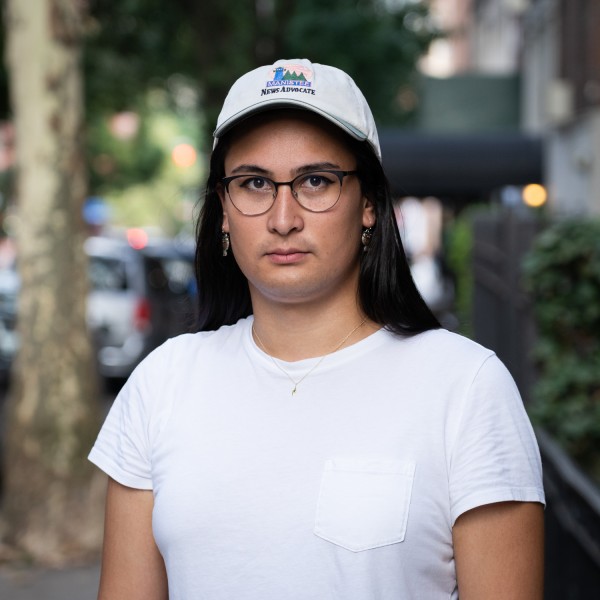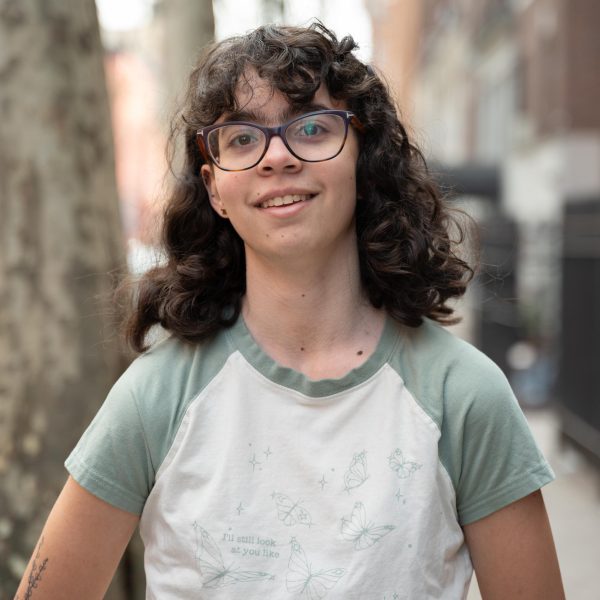Hi everyone!
Part of the purpose of this newsletter is to explain some of the processes that our readers don’t usually see. One example of that was last week’s Editor’s Note, which laid out the decision-making behind a retraction we had just issued.
But it isn’t just these big decisions that I want our readers to be more informed about — I also want you to have some idea of what the day-to-day workflow looks like at WSN. Even if it’s not as exciting, it’s at least as important.
First, though, this week’s top stories.
|
|

|
|
A study by NYU Rory Meyers College of Nursing found a correlation between COVID-19, sleep insufficiency and poor mental health among nurses. (Photo by Tony Wu)
|
|
News
A study led by researchers from NYU’s Rory Meyers nursing school documented insomnia, anxiety and burnout in nurses.
NYU’s student government passed resolutions calling for NYU to support its students on housing affordability and transit expenses.
As the recently appointed executive director of NYU’s Metropolitan Center for Research on Equity and the Transformation of Schools, Fabienne Doucet is the first Black woman to head a Steinhardt research center.
|
|

|
|
Gracie Abrams’ latest album, “This Is What It Feels Like,” was released on Nov. 12. (Image courtesy of Interscope PR)
|
|
Arts and culture
Gracie Abrams, a rising star of bedroom pop, spoke with Sarah John about vulnerability, going back on tour and working with Olivia Rodrigo.
It’s cold, you’re hungry, and NYU just sent you another condescending email telling you where you can and can’t eat inside. Our guide to Quick Stops helps you make the best of the situation.
Gabby Lozano ruins protein bars for you and offers a college-compatible alternative recipe.
|
|

|
|
NYU dining halls’ take-out packaging has accelerated plastic consumption at NYU. (Photo by Kiran Komanduri)
|
|
Opinions
If N95, KN95 and KF94 masks are so much more effective than those disposable blue surgical masks, then why is NYU only providing the less effective option? This week’s house editorial calls for NYU to bulk-order high-quality masks.
Grace Homan argues that it’s time for NYU Eats’ take-out options to become sustainable.
Gov. Kathy Hochul’s $250,000 budget cut to the Schomburg Center for Research in Black Culture is “reprehensible,” Srishti Bungle writes.
Off-Third, WSN’s satire column, returns with a compelling proposal: The Bobst Library atrium needs a slide.
|
|
Columns
This week’s edition of the Daybook, arriving in your inbox on Sunday evening, will feature a Feb. 16 discussion of race and caste in the United States with Pulitzer Prize winner Isabel Wilkerson and a Feb. 19 festival celebrating African food and culture.
Listen to This acclaims new tracks from Mallrat, Lucy Dacus and John Legend. Machine Gun Kelly’s latest single, though, "doesn’t even fulfill the bare minimum."
The Soapbox looks at the fight against sexual abuse in the Catholic Church, higher education and governments worldwide.
|
|
Explaining our editing process
Today, I’ll be focusing on our main editing process, what we call “copy flow.” That’s most of what we’re doing when we’re in production, whether in our Third North basement office or remotely, five nights a week.
There’s some editing that happens before this, and sometimes some that happens afterward, but this is most of it: A Google doc travels through five folders where a different person in a different role looks at it each time, with the goal of catching every type of mistake and improving everything that can be improved.
1. Copy
The copy flow process starts with a copy editor combing the article for the small, easily missed errors that our copy desk specializes in. They comment on the document to flag mistakes in standard spelling, grammar, capitalization and punctuation, as well as checking for consistency with the rules laid out in Associated Press style and WSN's own stylebook.
Some things our copy editors check include the proper names of NYU buildings and departments, correct abbreviations for titles and places, and correct styling of numbers and figures. They also make sure the statements and claims in an article are backed up by evidence.
As the first line of defense, copy editors also check links in our articles to make sure they work when you click on them and also to make sure that they actually substantiate what they’re being used to substantiate.
This is the first stage in the process so these small mistakes can be filtered out before higher-level edits are made. Good copy editing is never noticed. Bad copy editing ruins a publication. (I started at WSN as a copy editor, so I’ll always have a fondness for our copy desk.)
2. Managing
At this second stage in copy flow, someone from the managing team (our managing editor, our deputy managing editors, sometimes me) makes broader comments on the piece for the desk editor to address in the next stage.
This can include suggestions on the structure of the piece — maybe the fourth paragraph would work better as the third, or maybe a sentence needs to be inserted near the beginning to provide more context.
The editor here can suggest rewordings or rephrasings where they think they’re needed, and may suggest ideas for a different headline or lead.
3. Desk
Here’s where the changes that have been commented onto the doc so far get implemented. A desk editor or deputy desk editor (for example, a concert review might be desked by either our arts editor or our music editor) writes in the revisions that were suggested in comments at the first two stages. They make sure the piece is doing what they wanted it to do when they assigned it, and make some edits accordingly.
4. Copy Chief
After the desking stage, the copy chief or deputy copy chief does one last check for copy errors that may have been missed or introduced at previous stages. Maybe the desk editor used an em dash incorrectly, or nobody noticed that the period at the end of a quote was outside the quotation marks when it should have been inside. They might also suggest any necessary changes to wording, phrasing or structure.
5. Final
At the final stage, someone from the managing team (most often me) resolves any remaining comments, rewriting as little as possible but as much as needed. They make sure everything in the piece has been checked for accuracy and quality. This is where all the edits are implemented and the article is made ready for publication.
Once the final edits are made, the editor uploads the article onto our website and schedules it for publication the next morning.
It depends on the length of the article and how many edits we choose to make, but this whole process usually takes a couple hours per piece.
As you may have noticed, only the desk editor (who worked with the writer to assign the piece) and a senior editor on the managing team are actually editing the document directly. By only entrusting these two roles to change the writing, we try to minimize compromising the author’s voice or intent with excessive edits.
Is there anything else you’d like to know about how WSN works? Is there anything you’d like to see us work on? You can reach out to me directly at the email down below, and learn more about submitting tips, articles or letters to the editor at nyunews.com/submit.
That’s it for today’s Editor’s Note. Until next week,
—the editor
|
|
|
|

